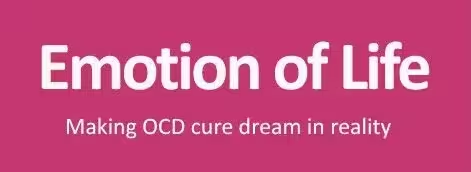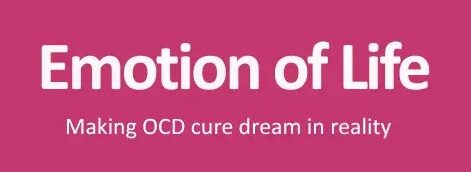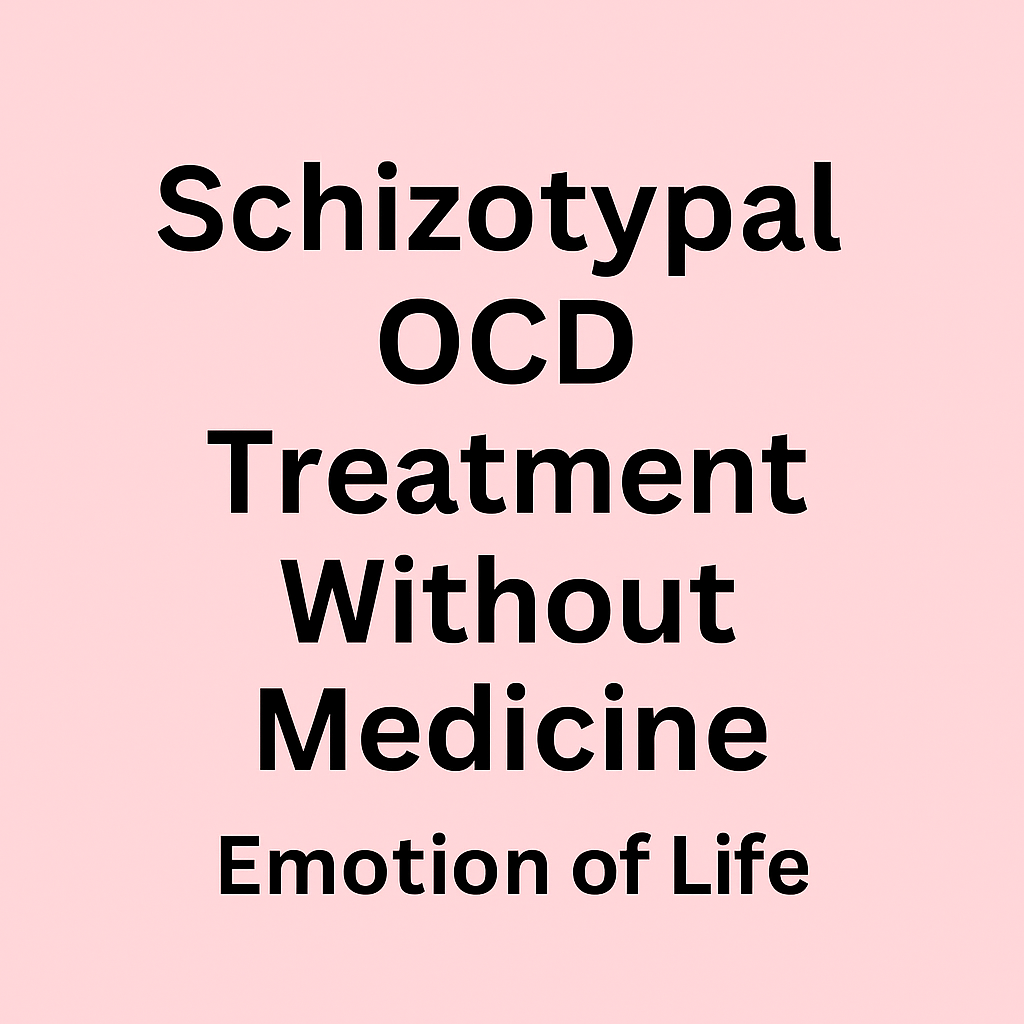In the evolving landscape of mental health, Obsessive-Compulsive Disorder (OCD) continues to be one of the most misunderstood and misdiagnosed conditions. A particularly complex and lesser-known variant is Schizotypal OCD – a manifestation where classic OCD symptoms intertwine with schizotypal thinking patterns, creating a challenging clinical picture. At Emotion of Life, under the expertise of OCD Specialist Therapist Shyam Gupta and Pratibha Gupta, clients receive personalized, non-medicated treatment that addresses the deepest layers of such hybrid conditions.
Understanding Schizotypal OCD
Schizotypal OCD refers to a subtype of OCD characterized by bizarre intrusive thoughts, paranoia, magical thinking, and a distorted perception of reality. These features can often mimic or overlap with schizotypal personality disorder or even psychotic-like OCD symptoms, leading to diagnostic confusion.
While typical OCD involves intrusive thoughts followed by compulsive behaviors aimed at neutralizing anxiety, schizotypal OCD includes intrusive content that may appear delusional or psychotic. However, unlike actual psychosis, the individual with schizotypal OCD retains some degree of insight and struggles internally with the irrationality of their thoughts.
For example, someone may obsess over the idea that their thoughts can control other people or influence global events. These are not true delusions but schizotypal traits in OCD — irrational yet recognized as distressing by the sufferer.
Schizotypal OCD vs. Schizotypal Personality Disorder
It is crucial to differentiate between OCD vs schizotypal personality disorder. The latter is a pervasive personality pattern involving social withdrawal, magical thinking, and odd behavior, often present from early adulthood. In contrast, schizotypal OCD emerges as a subset of OCD and is episodic, typically driven by specific obsessive fears and rituals.
Moreover, while schizotypal personality disorder shows a chronic and fixed pattern of thinking, people with schizotypal OCD display an internal battle against these thoughts, showing a desire for relief and recovery. They often ask themselves:
“Am I going crazy? Why do I think this way when I know it’s not true?” — signaling OCD or psychosis spectrum confusion but not a total loss of reality testing.
The Role of Paranoia and Delusional Thinking in OCD
In schizotypal OCD, paranoia in OCD may manifest as irrational fears of being watched, targeted, or punished for one’s thoughts. These fears are not anchored in external reality but are often rooted in intrusive, repetitive thoughts with bizarre content.
Sometimes, individuals develop what appears to be delusional OCD, where they believe in the truth of their obsessive fears. For instance, believing they caused a disaster through their thoughts. Although such beliefs border on delusional, they often carry a shred of doubt or internal conflict, which distinguishes them from true psychosis.
Such individuals may refuse psychiatric medication fearing that it confirms they are “mad,” but still seek therapy in hopes of controlling their overwhelming thoughts.
Emotion of Life’s Drug-Free Approach
At Emotion of Life, we recognize that traditional medication-based treatment often falls short for such complex OCD profiles. Many clients do not respond to SSRIs or antipsychotics or simply wish to avoid them. The OCD Recovery and Cure Program developed by Shyam Gupta and Pratibha Gupta offers a non-medicated solution rooted in CBT for schizotypal OCD, Exposure and Response Prevention (ERP), thematic counselling, and wellness restructuring.
This structured recovery model focuses on:
- Identifying schizotypal thinking patterns and separating them from true psychosis.
- Gradually exposing clients to their bizarre thoughts in controlled environments.
- Teaching reality testing and meta-cognitive techniques.
- Using Thematic ERP to deconstruct irrational belief systems.
- Rebuilding a rational, structured mindset free from compulsions and avoidance.
Unique Recovery Strategy: CBT + ERP Without Antipsychotics
Unlike mainstream psychiatric care that leans heavily on medication, Emotion of Life offers a comprehensive recovery model without antipsychotics. Clients work daily on structured CBT tasks designed to challenge and deconstruct psychotic-like OCD symptoms without destabilizing the client.
These include:
- Tracking intrusive thought patterns.
- Practicing ERP techniques with therapist supervision.
- Rationally disputing bizarre beliefs with evidence-based CBT frameworks.
- Strengthening self-awareness through mindfulness and grounding.
Our clinical experience has shown that most clients with OCD with psychotic features can stabilize with consistent psychological intervention alone.
Non-Medication-Based Management of Schizotypal OCD
Emotion of Life’s drug-free OCD recovery model focuses on psychological and behavioral interventions, including:
- CBT (Cognitive Behavioral Therapy): Helps clients challenge irrational beliefs and reduce magical thinking.
- ERP (Exposure and Response Prevention): Gradual exposure to bizarre intrusive thoughts without performing compulsions.
- Wellness Coaching: Focuses on stress management, emotional resilience, and healthy lifestyle choices.
- Mindfulness and Meditation: Enhances present-moment awareness and reduces cognitive fusion.
- Rational Belief Restructuring: Identifies and transforms distorted beliefs linked to psychotic-like OCD symptoms.
- Daily Sessions and Team-Based Approach: Clients receive intensive care from a multidisciplinary team, including psychologists and behavior therapists.
Emotion of Life’s OCD Recovery and Cure Program
Emotion of Life offers a scientifically structured, medicine-free program for OCD recovery, developed by Shyam Gupta and Pratibha Gupta. The program includes:
- Initial assessment and personalized therapy planning.
- Psychoeducation about OCD or psychosis spectrum confusion.
- Cognitive therapy to address schizotypal traits in OCD.
- Structured ERP exercises based on the client’s fear hierarchy.
- Daily monitoring and behavior coaching.
- Rational thought training to reduce paranoia and delusional OCD patterns.
- Mindfulness and grounding practices.
- Family guidance sessions to build support systems.
- Progress reviews and feedback adjustment.
- Long-term relapse prevention strategies.
Real-World Case Progress: From Schizotypal OCD to Recovery
Clients who once suffered from terrifying intrusive thoughts such as “I might harm someone with my mind” or “I can predict and cause death” have found relief through our OCD Recovery and Cure Program. These bizarre intrusive thoughts, initially mistaken for psychosis, were managed through non-pharmacological tools.
One teenage client believed she could control her teacher’s mood by blinking her eyes. Through repeated ERP and CBT techniques under Pratibha Gupta’s care, the obsessive belief was dismantled, and she regained confidence in social situations without a single antipsychotic.
Another adult male client feared he could send harmful energy through his thoughts. Guided by Shyam Gupta, his therapy included deep meta-cognitive correction work and ERP exercises, eventually leading to full recovery and return to work.
Real Client Success Stories
1. Ritu, 29 (Delhi): Struggled with obsessive magical thinking and paranoia. Within 5 months of daily therapy without medicine, she now leads a confident, functional life.
2. Amit, 35 (Mumbai): Diagnosed with OCD with psychotic features and refused medications. After completing the OCD Recovery and Cure Program, he regained clarity and resumed work successfully.
3. Naina, 22 (Bangalore): Had bizarre intrusive thoughts and was misdiagnosed with a psychotic disorder. Emotion of Life’s CBT for Schizotypal OCD helped her recover fully without antipsychotics.
Why Emotion of Life’s Approach Works
- No dependency on drugs: Avoids unnecessary pharmacological side effects.
- Daily CBT and ERP tasks: Promotes fast-track cognitive restructuring.
- Personalized therapy: Tailored exposure tasks based on each client’s belief system.
- In-depth therapist-client collaboration: Clients are supported closely throughout recovery.
By focusing on the root cause, not just the symptoms, we make true recovery possible.
Conclusion: A New Hope for Complex OCD
If you or a loved one suffer from intrusive, bizarre thoughts and fear you might be going insane, you’re not alone. Schizotypal OCD is real, and it is treatable without medication.
At Emotion of Life, under the compassionate leadership of Shyam Gupta and Pratibha Gupta, our team empowers clients to rebuild their minds using structured, scientific, and non-invasive methods. Our focus is on permanent healing and full functionality, not just symptom control.
OCD recovery without antipsychotics is not just a hope — it is a reality, backed by countless success stories.
If you’re struggling with what feels like OCD or psychosis spectrum issues, reach out. True transformation is possible.


